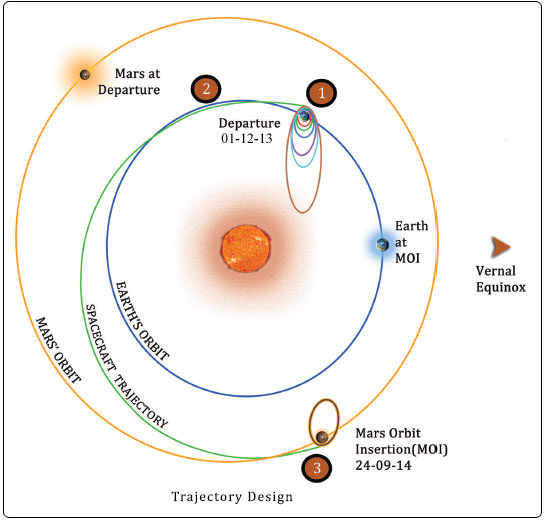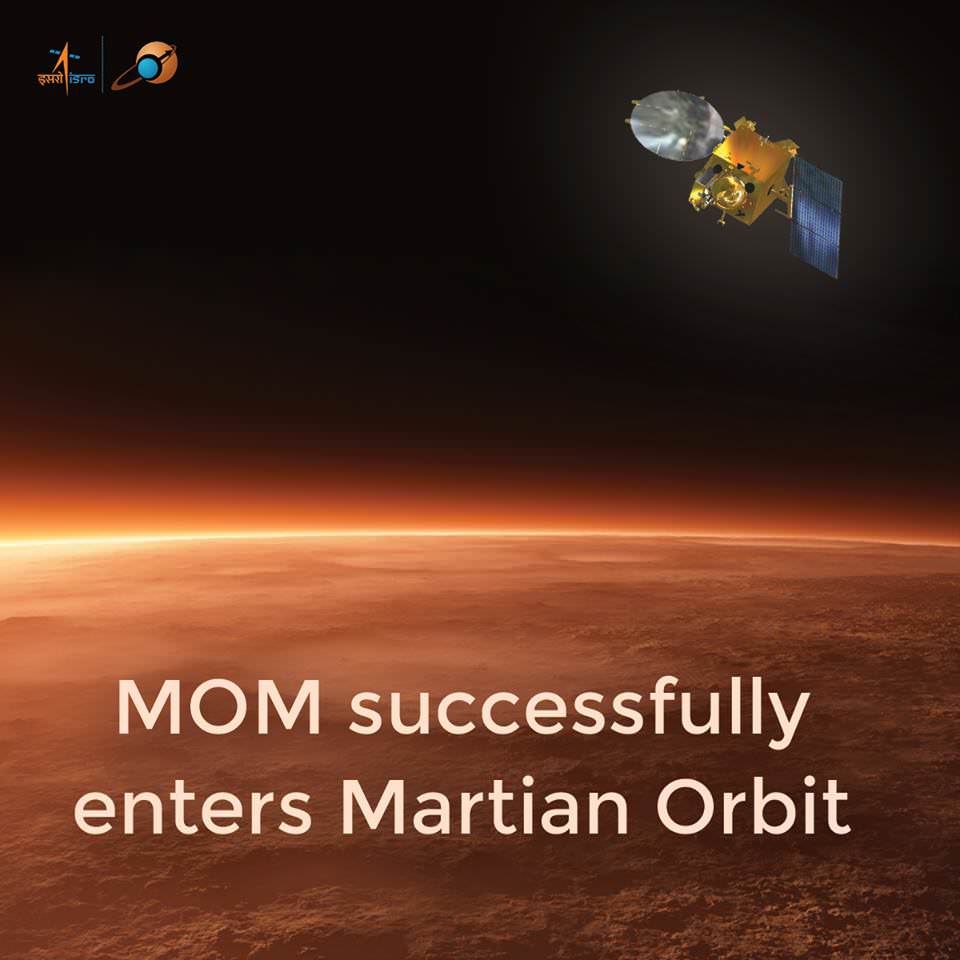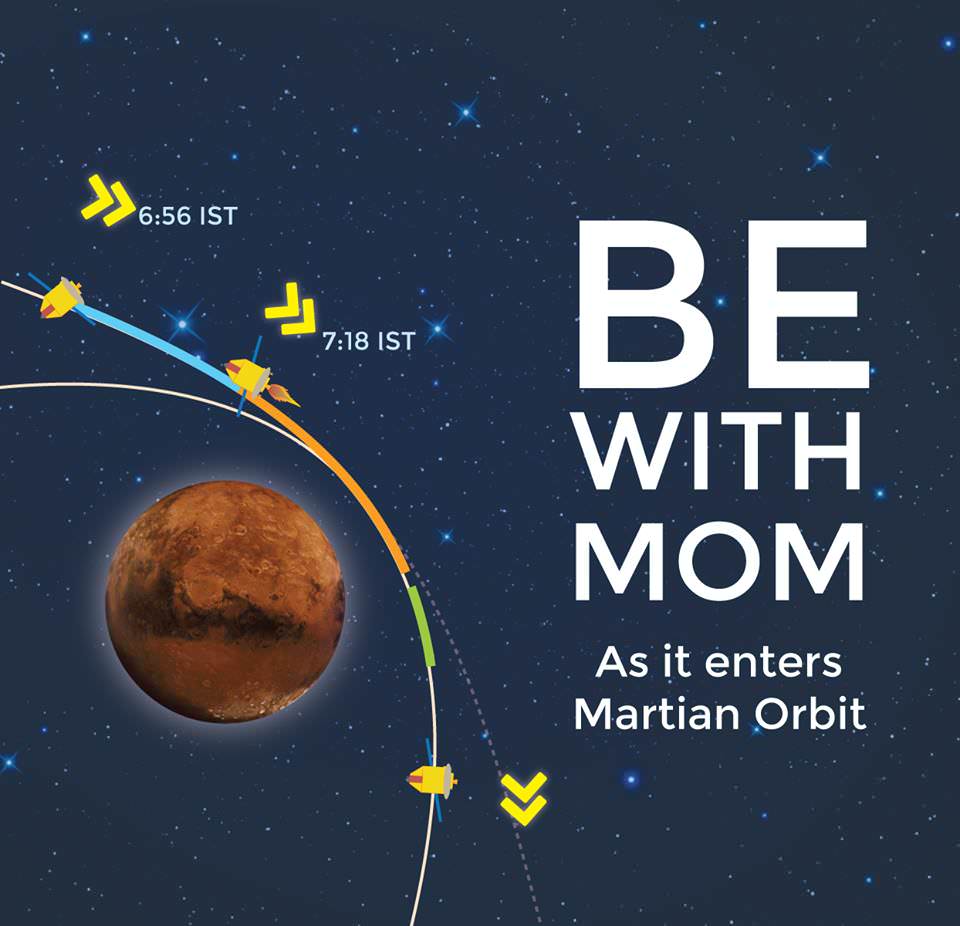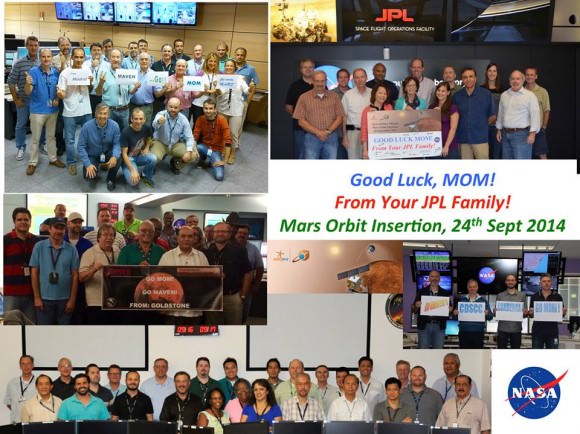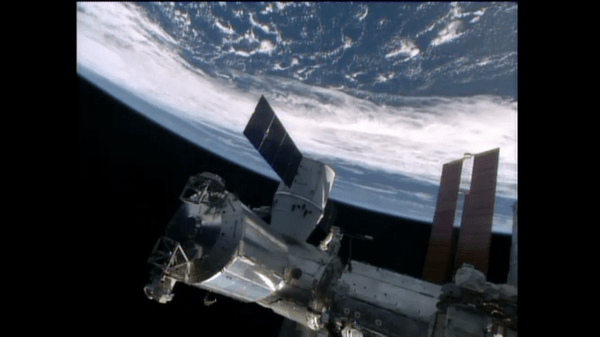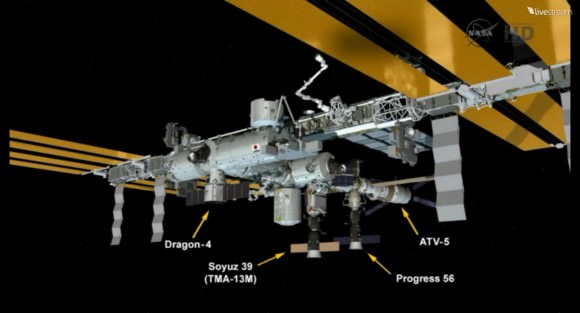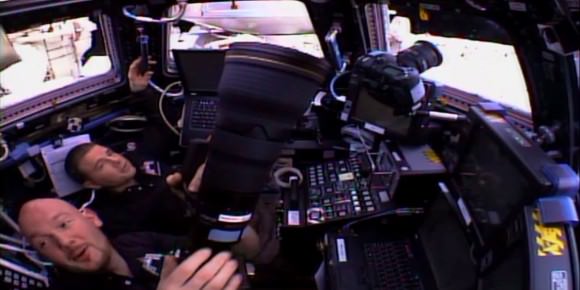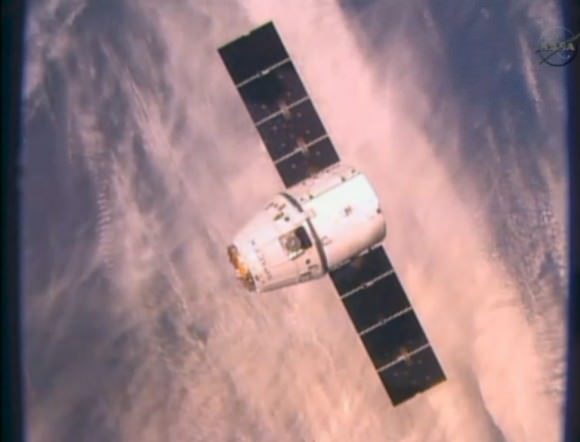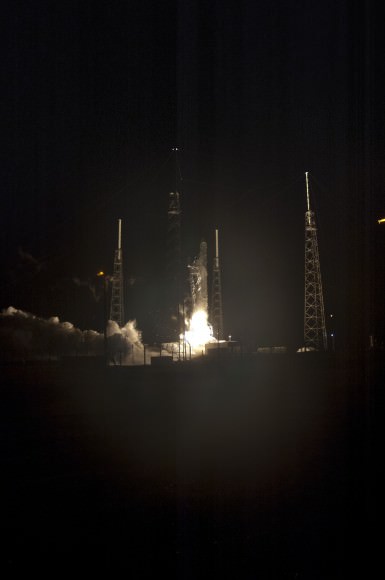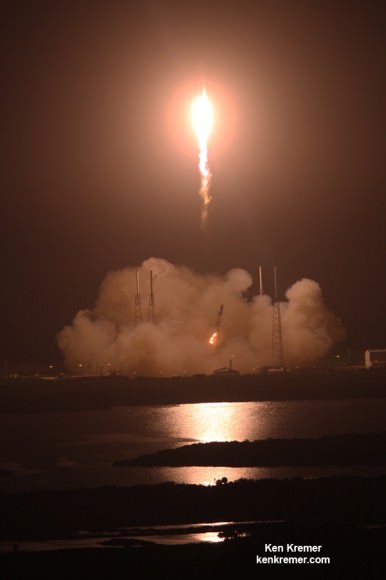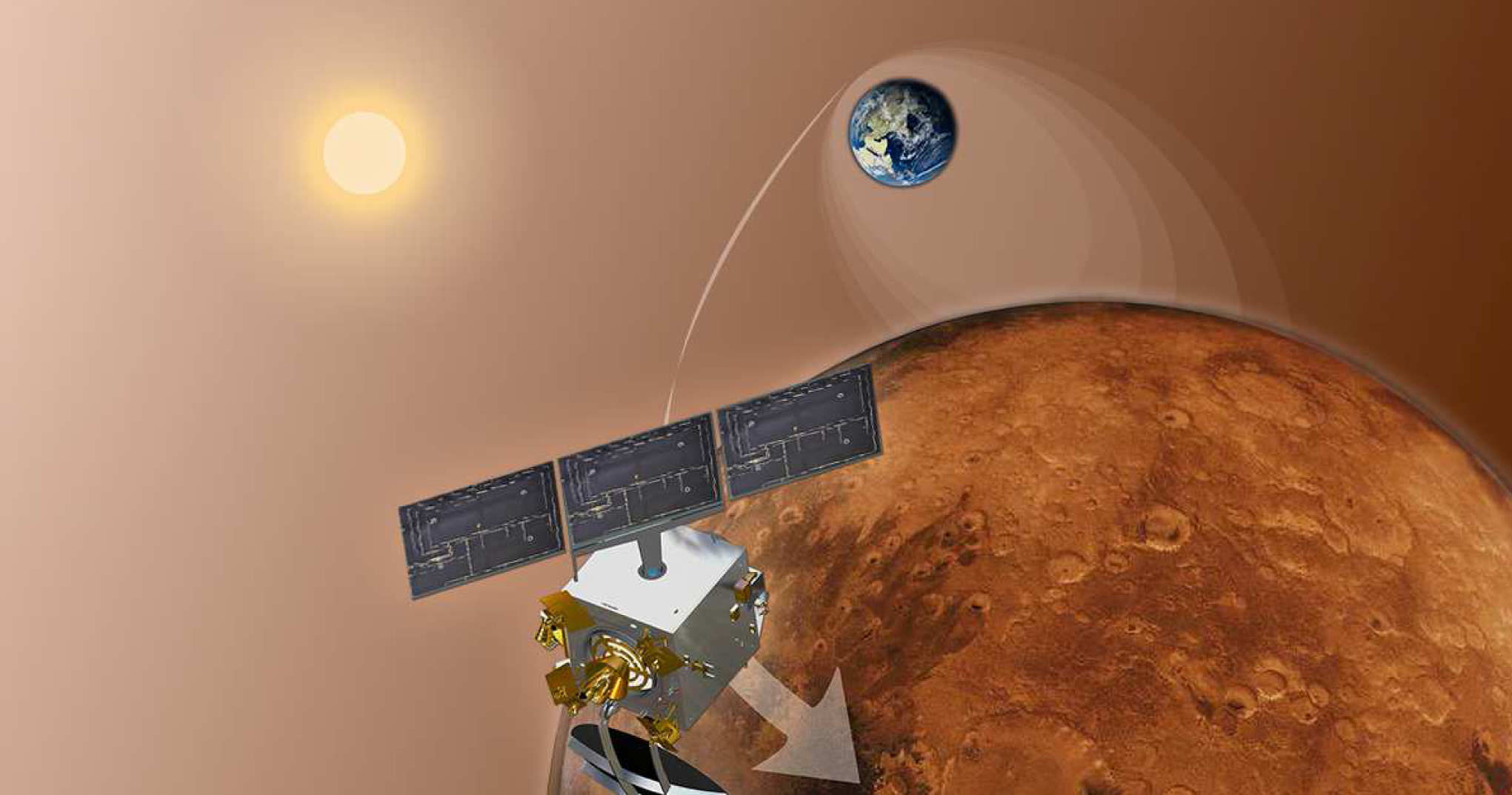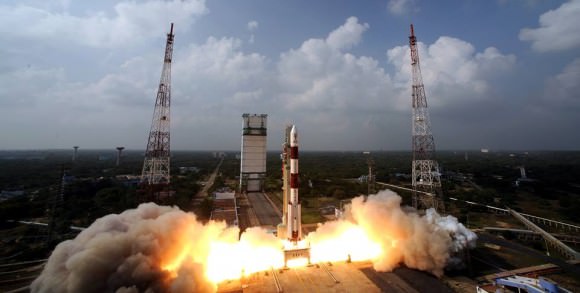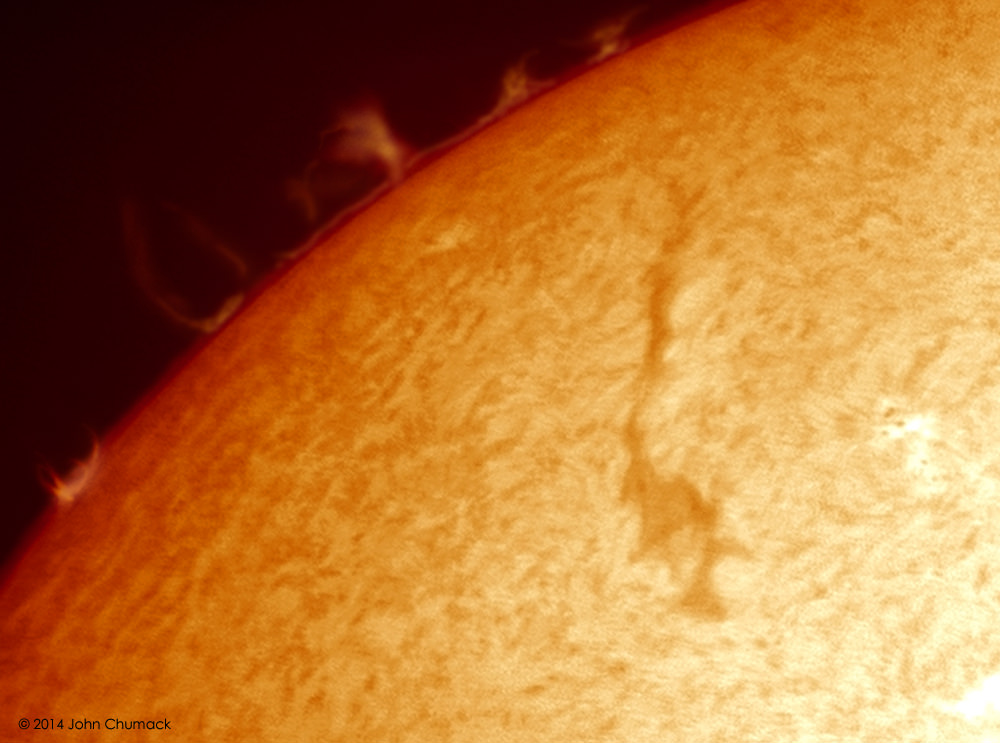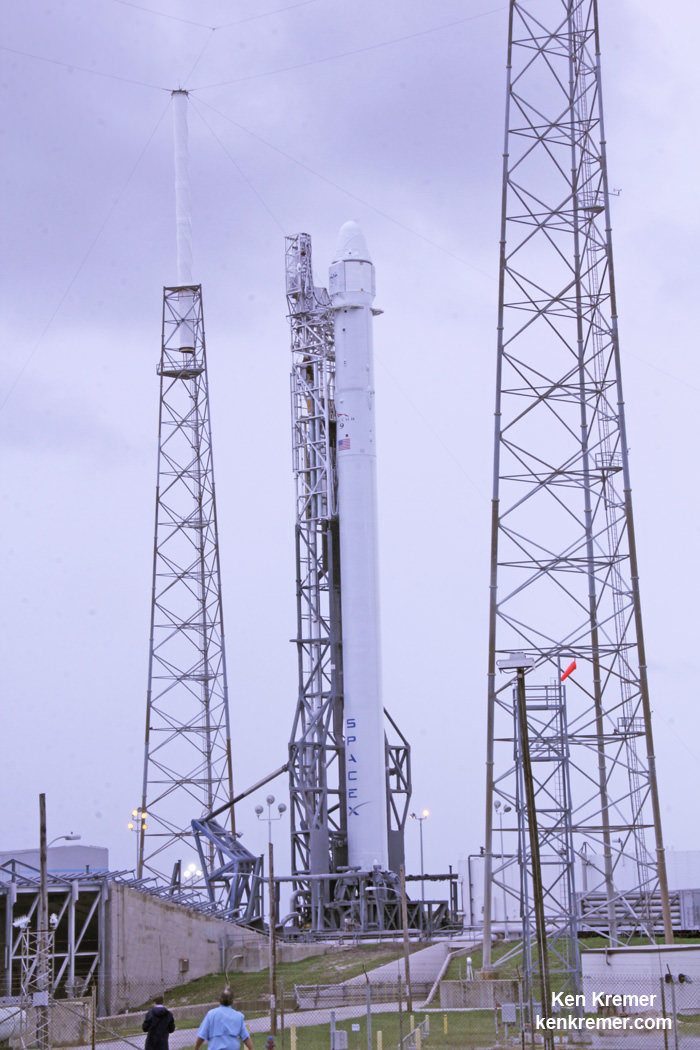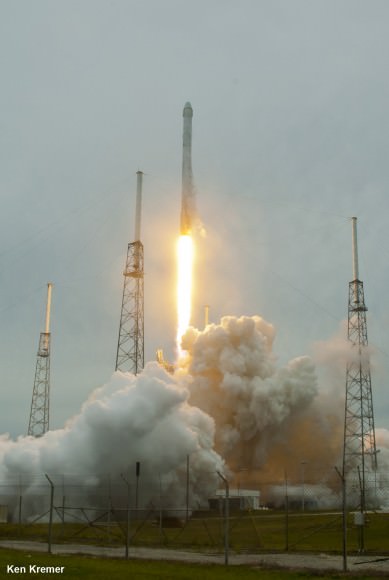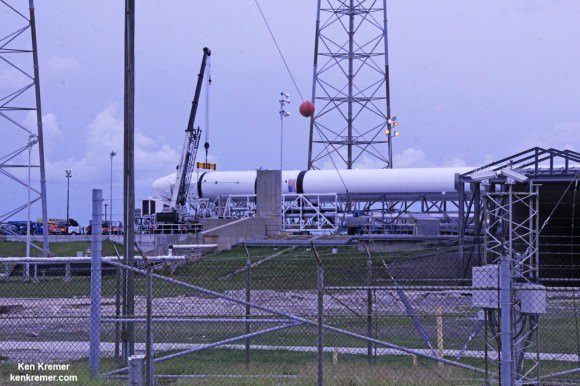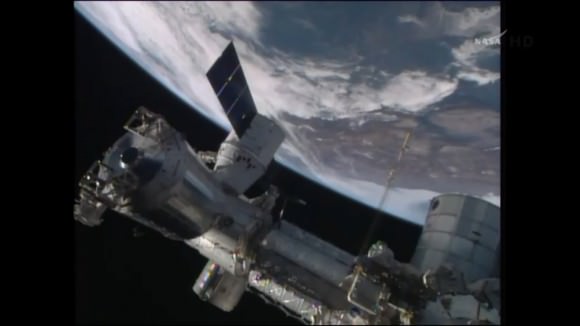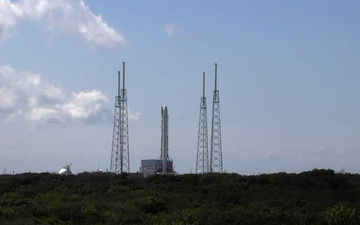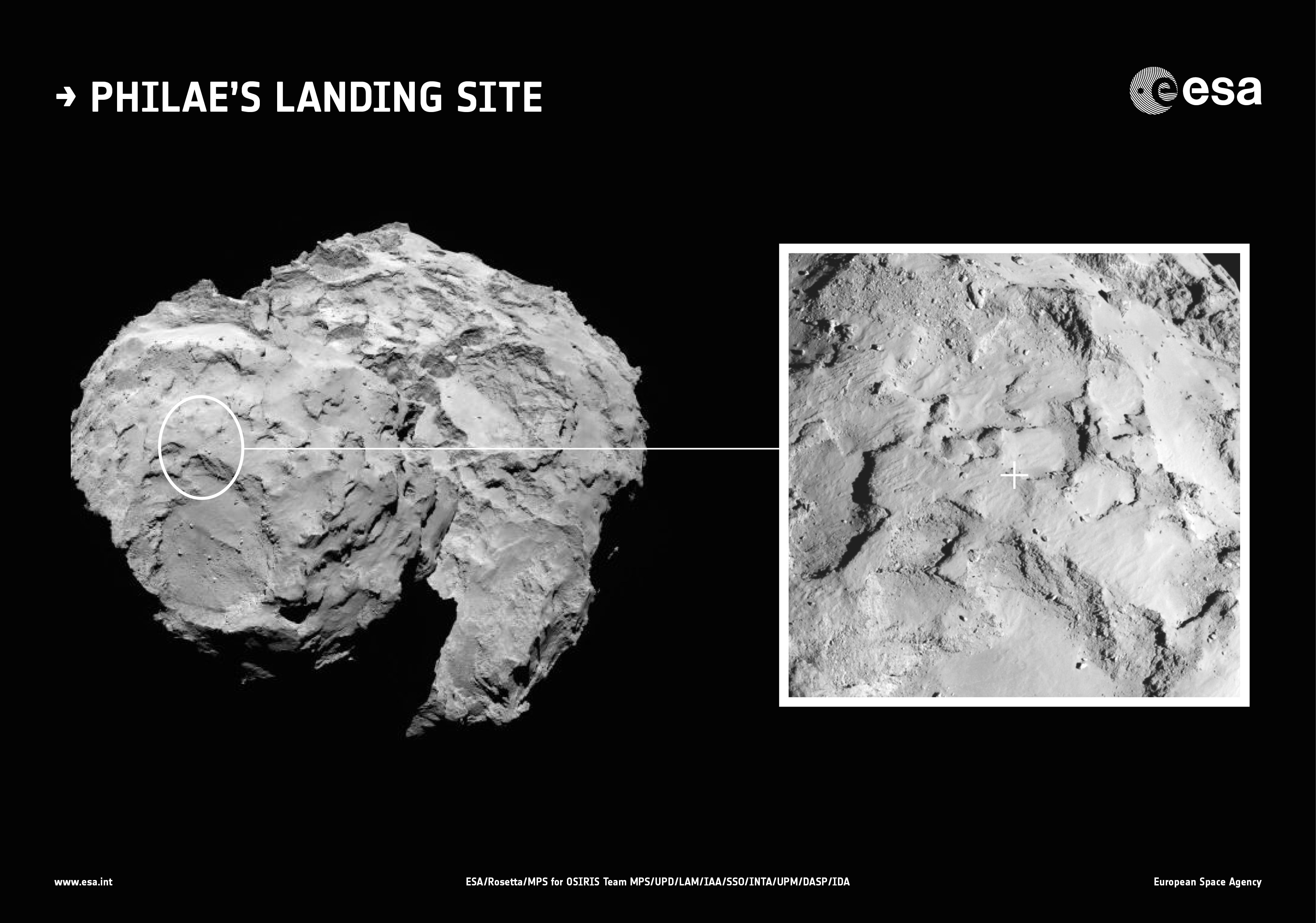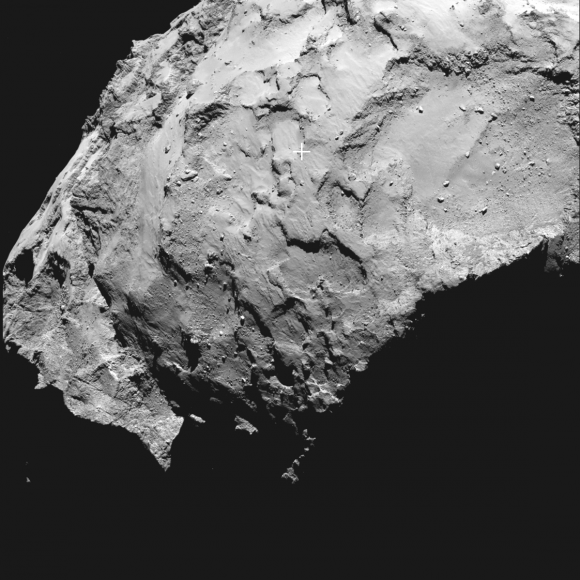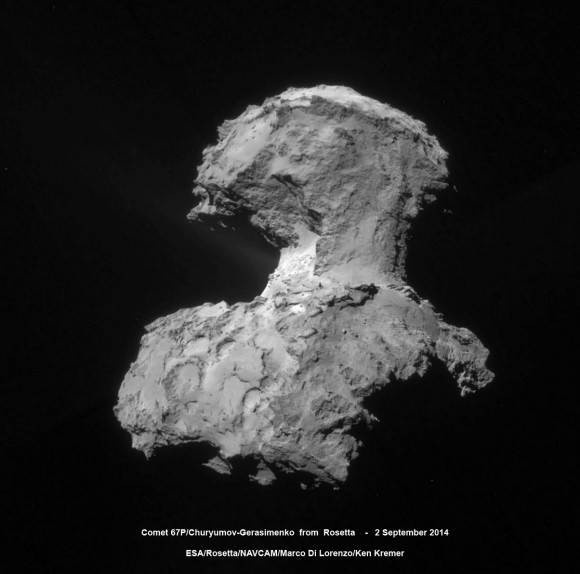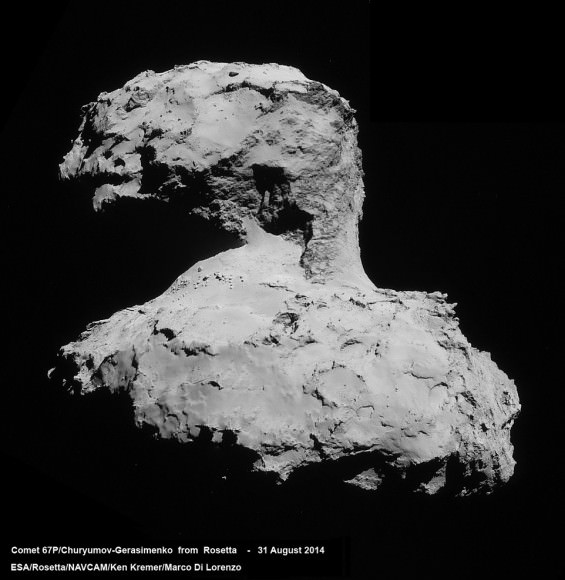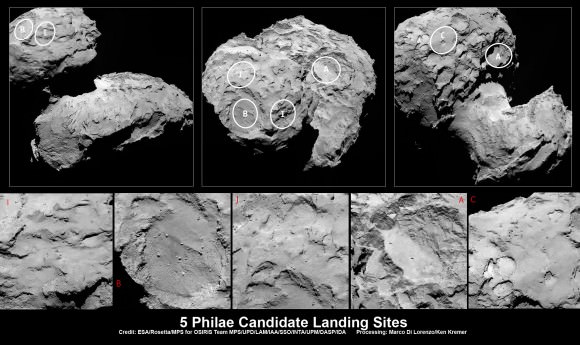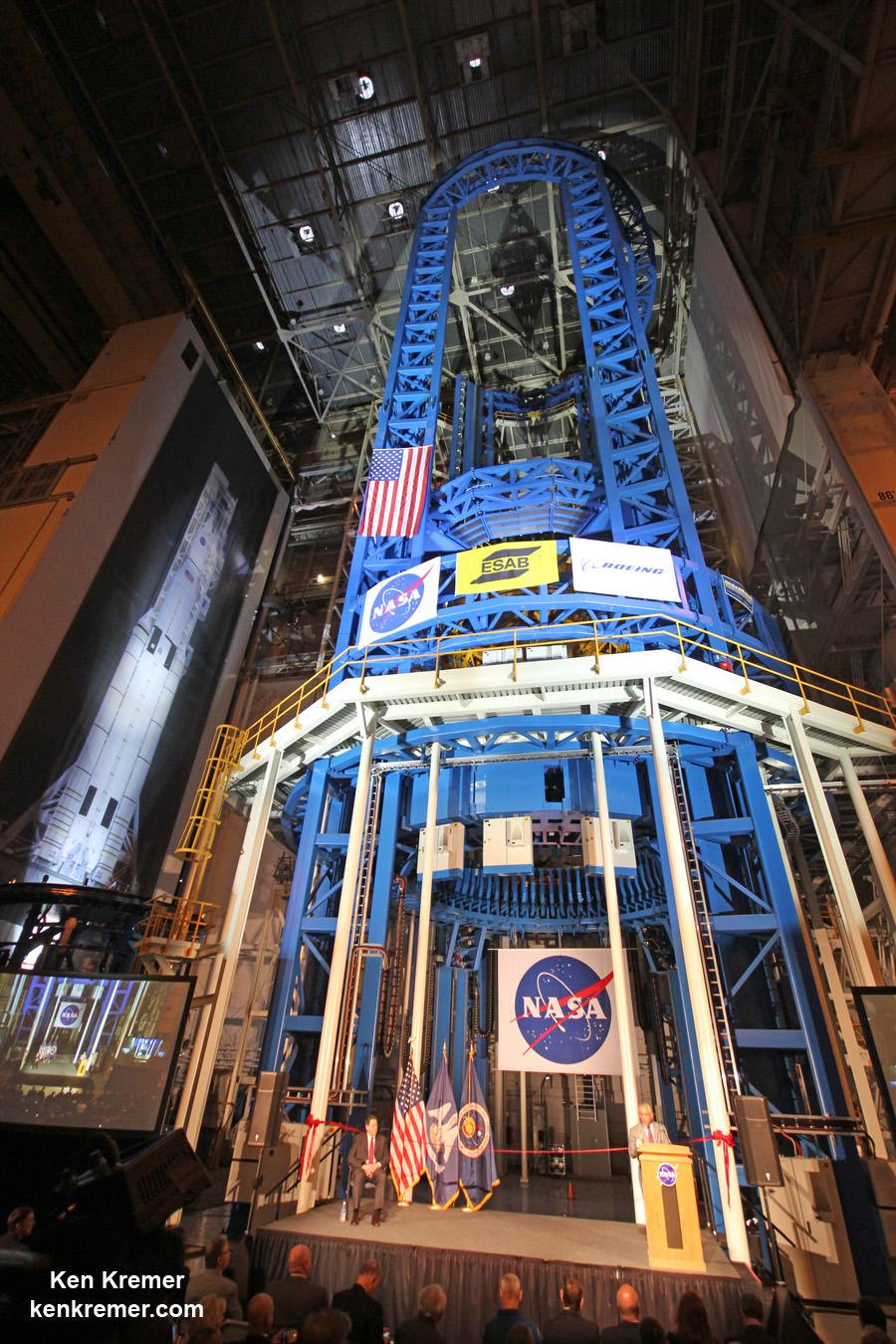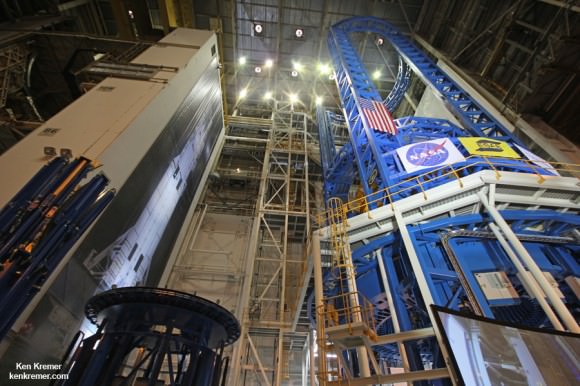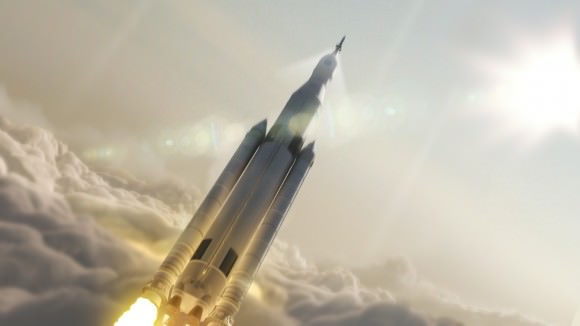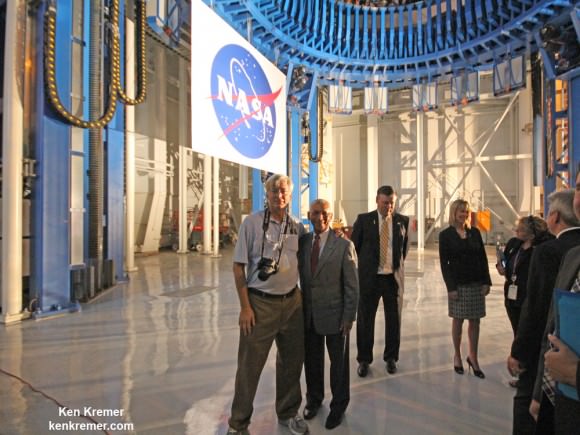Artists concept of India’s Mars Orbiter Mission (MOM) successfully achieving Mars orbit on Sept. 23 EDT/Sept. 24 IST. Credit: ISRO
Story updated[/caption]
Space history was made today when India’s car sized Mars Orbiter Mission (MOM) successfully fired its braking rockets and arrived in Mars orbit today (Sept. 23 EST/Sept. 24 IST) on the nation’s first attempt to explore the Red Planet. Indeed MOM is India’s maiden interplanetary voyager and “created history.”
India thereby joins an elite club of only three other entities who have launched probes that successfully investigated Mars – following the Soviet Union, the United States and the European Space Agency (ESA).
Wild applause erupted with beaming smiles from ear to ear at India’s Bangalore mission control center after signals confirming a successful full duration firing of the crafts engines for 24 minutes and 13 seconds for the crucial Mars Orbital Insertion (MOI) maneuver that placed MOM into orbit, were received precisely as planned at 10:30 p.m. EDT (Sept 23) or 8:00 IST (Sept. 24).
Traveling at the speed of light it took nearly 12.5 minutes for the good news signals to arrive on Earth from Mars across the vast expanse of some 140 million miles (225 million kilometers) of interplanetary space.
MOM’s Red Planet arrival was webcast live worldwide by the Indian Space Research Organization (ISRO), India’s space agency which designed and developed the orbiter.
ISRO’s website also gave a play by play in real time, announcing the results of critical spacecraft actions along the arrival timeline just moments after they became known.
“India has successfully reached Mars!” declared Indian prime minister Narendra Modi, who watched the events unfold from mission control at ISRO’s Telemetry, Tracking and Command Network (ISTRAC) in Bangalore.
“History has been created today. We have dared to reach out into the unknown and have achieved the near-impossible. I congratulate all ISRO scientists as well as all my fellow Indians on this historic occasion.”
Modi gave a stirring and passionate speech to the team, the nation and a global audience outlining the benefits and importance of India’s space program. He implored the team to strive for even greater space exploration challenges, sounding very much like US President John F. Kennedy over 50 years ago!
“We have gone beyond the boundaries of human enterprise and imagination,” Modi stated. “We have accurately navigated our spacecraft through a route known to very few. And we have done it from a distance so large that it took even a command signal from Earth to reach it more than it takes sunlight to reach us.”
The do-or-die MOI breaking maneuver slowed MOM’s velocity by 1099 m/s (2457 mph) vs. an expected 1098.7 m/s – using the combined thrust of the 440 Newton Liquid Apogee Motor (LAM) main engine and eight smaller 22 newton liquid fueled engines.
The entire MOI maneuver took place fully autonomously under the spacecrafts preprogrammed sole control due to the long communications lag time and also during a partial communications blackout when the probe was traveling behind Mars and the signal was blocked.
MOM’s goal is to study Mars surface features, morphology, mineralogy and the Martian atmosphere with five indigenous scientific instruments. Among other goals it will sniff for methane as a potential marker for biological activity.
MOM’s success follows closely on the heels of NASA’s MAVEN orbiter which also successfully achieved orbit barely two days earlier on Sept. 21.
Modi noted that more than half of all missions to Mars have failed.
“We have prevailed. We have succeeded on our first attempt. We put together the spacecraft in record time, in a mere three years from first studying its feasibility,” Modi elaborated.
“These are accomplishments that will go down in history. Innovation by its very nature involves risk. It is a leap into the dark .. . and the unknown. Space is indeed the biggest unknown out there.”
“Through your brilliance and hard work [at ISRO] you have made a habit of accomplishing the impossible.”
“The success of our space program is a shining symbol of what we are capable of as a nation. Our space program is an example of achievement which inspires us all .. and future generations … to strive for excellence ourselves.”
“Space technology translates to space applications here on Earth … to improve the life of our citizens.”
“Let us set ourselves even more challenging goals and strive even harder to achieve them. Let us push our boundaries. And then push some more, and push some more!” said Modi jubilantly.
MOM now joins Earth’s newly fortified armada of seven spacecraft currently operating on Mars surface or in orbit – including MAVEN, Mars Odyssey (MO), Mars Reconnaissance Orbiter MRO), Mars Express (MEX), Curiosity and Opportunity.
“MOM and MAVEN will keep each other company in orbit,” said Modi.
Today, MOM concluded her over 10 month interplanetary voyage of some 442 million miles (712 million km) from Earth to the Red Planet.
“Congratulations to the MOM team on behalf of the entire MAVEN team! Here’s to exciting science from the two latest missions to join the Mars fleet!”, wrote Bruce Jakosky, MAVEN Principal Investigator, in a post on the ISRO MOM facebook page.
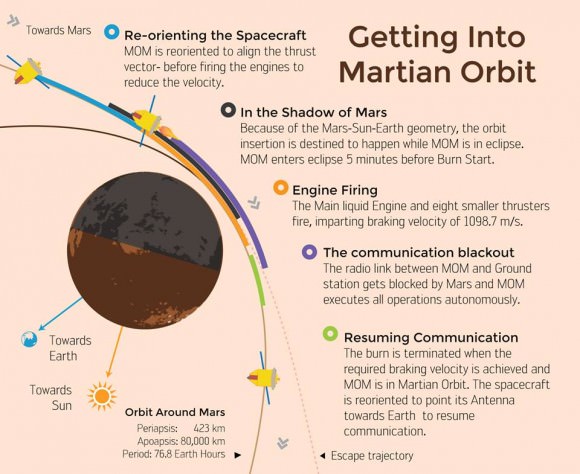
MOM was launched on Nov. 5, 2013 from India’s spaceport at the Satish Dhawan Space Centre, Sriharikota, atop the nations indigenous four stage Polar Satellite Launch Vehicle (PSLV).
The flight path of the approximately $73 Million probe was being continuously monitored by the Indian Deep Space Network (IDSN) and NASA JPL’s Deep Space Network (DSN) to maintain its course.
“The events related to Mars Orbit Insertion progressed satisfactorily and the spacecraft performance was normal. The Spacecraft is now circling Mars in an orbit whose nearest point to Mars (periapsis) is at 421.7 km and farthest point (apoapsis) at 76,993.6 km. The inclination of orbit with respect to the equatorial plane of Mars is 150 degree, as intended. In this orbit, the spacecraft takes 72 hours 51 minutes 51 seconds to go round the Mars once,” according to an ISRO statement.
MOM is expected to investigate the Red Planet for at least six months.
Although MOM’s main objective is a demonstration of technological capabilities, she will also study the planet’s atmosphere and surface.
The probe is equipped with five indigenous instruments to conduct meaningful science – including a tri color imager (MCC) and a methane gas sniffer (MSM) to study the Red Planet’s atmosphere, morphology, mineralogy and surface features. Methane on Earth originates from both geological and biological sources – and could be a potential marker for the existence of Martian microbes.
Both MAVEN and MOM’s goal is to study the Martian atmosphere , unlock the mysteries of its current atmosphere and determine how, why and when the atmosphere and liquid water was lost – and how this transformed Mars climate into its cold, desiccated state of today.
Stay tuned here for Ken’s continuing Earth and planetary science and human spaceflight news.
